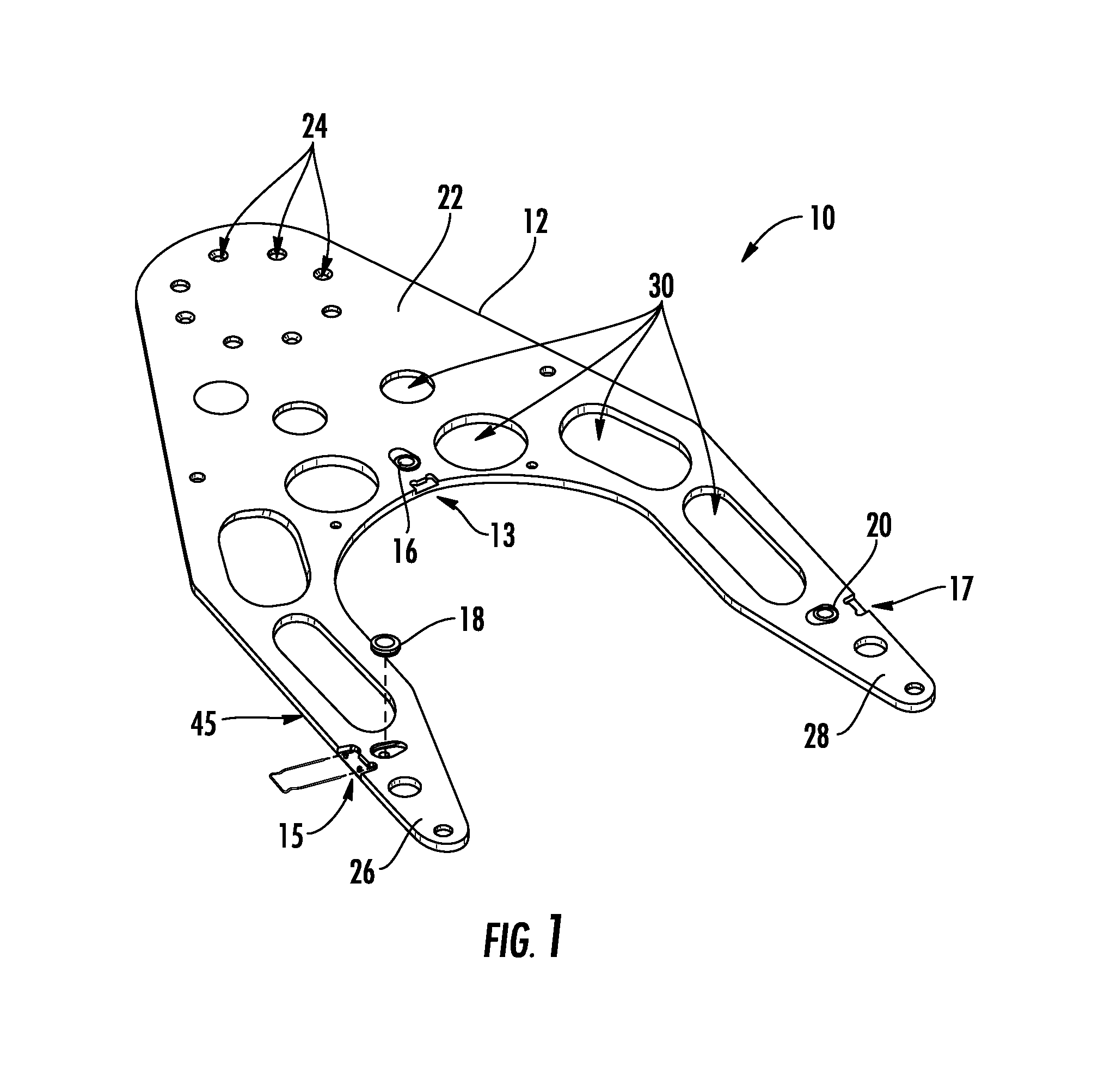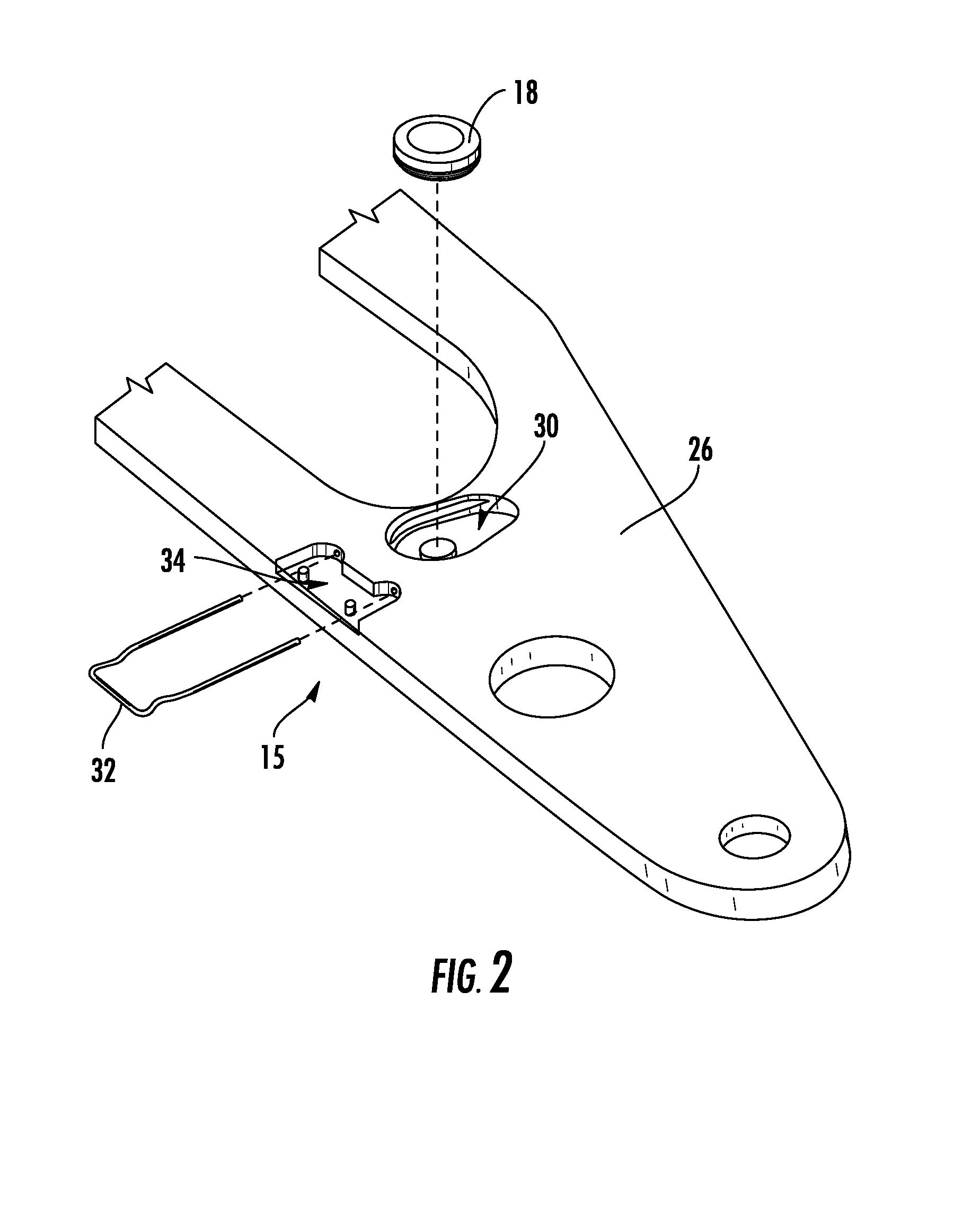Spring retained end effector contact pad
a contact pad and end effector technology, applied in the field of composite structures with wear resistance, can solve the problems of affecting the service life of the end effector, and requiring replacement of the entire end effector, so as to reduce the dispersion of particulate matter and restrict the movement of the contact pad
- Summary
- Abstract
- Description
- Claims
- Application Information
AI Technical Summary
Benefits of technology
Problems solved by technology
Method used
Image
Examples
Embodiment Construction
[0017]An improved composite end effector in accordance with the present disclosure will now be described more fully hereinafter with reference to the accompanying drawings, in which preferred embodiments of the invention are shown. The disclosed end effector, however, may be embodied in many different forms and should not be construed as being limited to the embodiments set forth herein. Rather, these embodiments are provided so that this disclosure will be thorough and complete, and will fully convey the scope of the invention to those skilled in the art. In the drawings, like numbers refer to like elements throughout.
[0018]FIG. 1 illustrates an exemplary embodiment of a composite end effector 10 in accordance with the present disclosure. For the sake of convenience and clarity, terms such as “front,”“rear,”“top,”“bottom,”“right,”“left,”“up,”“down,”“inwardly,”“outwardly,”“lateral” and “longitudinal” will be used herein to describe the relative placement and orientation of component...
PUM
 Login to View More
Login to View More Abstract
Description
Claims
Application Information
 Login to View More
Login to View More - R&D
- Intellectual Property
- Life Sciences
- Materials
- Tech Scout
- Unparalleled Data Quality
- Higher Quality Content
- 60% Fewer Hallucinations
Browse by: Latest US Patents, China's latest patents, Technical Efficacy Thesaurus, Application Domain, Technology Topic, Popular Technical Reports.
© 2025 PatSnap. All rights reserved.Legal|Privacy policy|Modern Slavery Act Transparency Statement|Sitemap|About US| Contact US: help@patsnap.com



